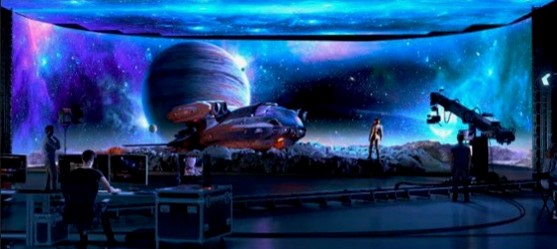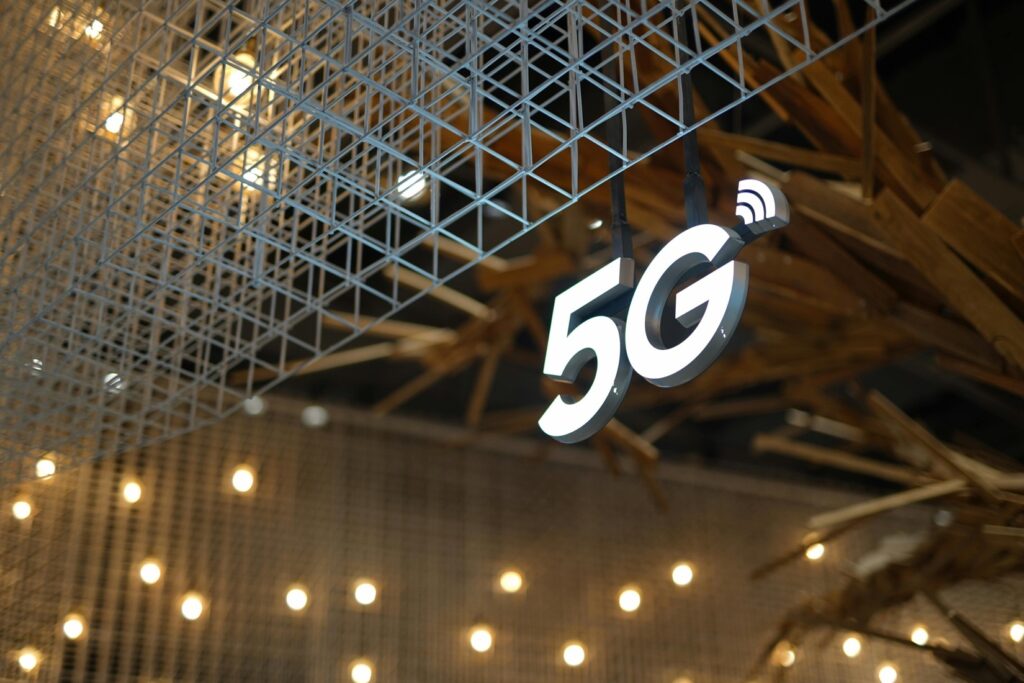“Great leaders don’t seek power. They’re called by necessity.” –Johanna, Allegiant, Summit Entertainment, 2016
The great thing about the NAB show (heck, any trade show) is that there’s a solid mix of real stuff, sorta good ideas, and downright whimsical wishes. Don’t believe us? Years ago, we came away from CES swearing to gawd 3D and 4K was going to be things… now! 3D was a wish and caused us to endure a bunch of really awful 3D films. 4K was beautifully fantastic, but the infrastructure was still heavily invested in HD, and the distribution infrastructure was barely beyond dial-up.
But consumer goods folks are always focused on telling you how great things are going to be when the infrastructure is there to support it. It has taken years of technological improvement, price reductions, and investment to make it real. In fact, today, most projects are shot in 8K and 12K, even though the pipes don’t have the bandwidth to deliver flawlessly. Producers and studios just want to future-proof projects for… tomorrow.
And yes, downscaling a project from 8K/12K to 4K does make for a better show/film to watch, enjoy.

It’s hard to determine what is real and what is wishful thinking when you’re caught up in the excitement, wishful thinking of the show. At NAB or IBC, it’s pretty easy to slip into the rabbit hole and just “know” that what you saw on the show floor or heard in one of the sessions is going to be available for you to use and enjoy soon.
We covered a lot of the NAB highlights last week but have one that straddles the boundaries of reality and, in our opinion, fantasy… virtual. Virtual production is real, with many benefits and capabilities. No wonder Sony devoted a big chunk of its floor space to highlighting its end-to-end solution.

Sony’s latest virtual video walls showed how massive video walls are cool, but not every production needs a 100-plus-foot virtual production facility, and in many instances, smaller, more easily reconfigured sets are more than equal to the task and can reduce a film’s production cost, including remote shoots that reduce the carbon footprint and making it a win-win for everyone.
Okay, virtual production isn’t the “knock your socks off” stuff you come to see at NAB. It’s just the new normal, and it’s setting the stage for some spectacular work. Of course, if you’re ready to get in on the ground floor of the virtual world, nothing beats a 3D VR camera setup. Folks have been discussing and displaying VR creation/production tools for years, even demonstrating solutions with an iPhone and Vision Pro. But, let’s just say it’s still a work in progress.But to see what the camera sees, you obviously need a VR headset, and it’s okay for a few minutes and sometimes even for a half-hour. After that, you’re cut off from the real world.
Apple’s Vision Pro and Meta’s clunky Quest 3 will both be in firm display and usage at this year’s Paris Olympics by digital natives to highlight “next-generation engagement.” But that doesn’t mean it’s ready for prime time or that the world will rush to get (and use) their headsets for everything. Every year, a number of market analysts project that VR headset sales will be growing rapidly in the next few years, and where there are solid applications for the devices. Sitting at home or walking around “in” your entertainment probably isn’t one of them.
VR headset/sales reached their pinnacle back in 2021when Meta’s Mark Zuckerberg pronounced the world would soon be working and living in the Metaverse. Needless to say, people just haven’t been “hungry for a mind-blowing experience.”But there are some excellent VR games. We have friends who think nothing of strapping on a headset for a couple of hours to pit their talents against the worst that the universe has to throw at them. Yeah, they’re awesome. Emerge with their headset imprint, and you know they were victorious.
There are also some outstanding VR applications in education, training (engineering, healthcare training/treatments, immersive/realistic job training, and more). If you’re not put off by living in isolation with folks in your household or people giggling when they see your VR headset imprint, that’s fine, but you won’t be in the majority, no matter how many great films you create/talk about.
It’s neat, but we’re years-plus away from volume profits. There’s also the hard fact that the build-out of 5G population coverage is presently about 45% and will be around 85% by 2029.

The Wi-Fi Alliance announced that all of the specifications for 7G standards and a few analysts have already projected fantastic sales in the next few years. Now, we appreciate that the Wi-Fi Alliance and several analysts announced that Wi-Fi 7 had already hit $1 billion even before its official launch and will hit $24-plus billion by 2030, but forgive us if we are a little skeptical that the transformation to tomorrow’s transformation will happen soon. However, the 5G infrastructure hasn’t been completed in many countries around the globe, and wireless service providers are just beginning to monetize earlier investments before they make the next leap. Actually, 5G delivers great performance for most day-to-day applications.
According to Parks Associates, you already have an average of 17 connected devices in your home and you rely on/expect to use them quickly and flawlessly all the time. That speed, performance, reliability is even more important in the office. And Wi-Fi is just a part of the whole Internet we rely on for business and personal communications around the world. If you want to get a good perspective of the fragility of our Internet-connected world, check out The Verge’s piece “The Cloud Under the Sea.”
Yep, all of that communication anywhere, anytime, anyplace relies on hundreds of thousands of miles of cable lying at the bottom of the ocean. Fortunately, when cables are cut by nature, accident, or malice, you probably don’t even realize it because there are backups for the backups for the backups. You get the picture.
With projects increasingly being created/produced/posted around the world, high-speed Internet is mandatory to quickly and effectively finalize a project. But speed and reliability are still something you can’t count on in certain areas. Now, we realize you could give a rat’s behind on the bandwidth and fast, reliable service around the world, but in today’s global content creation environment, we all have a stake in the game—especially if you’re a producer in Hollywood, a production team in England, a video editor in Toronto, a VFX team in New Zealand, or an audio team in Singapore. Suddenly, speed and reliability become vital.
It’s especially vital if you’re one of the production teams responsible for feeding the hungry— and picky—streaming video consumer. Or, if you’re on streamers’ delivery, the team responsible for hiccup-free content delivery to subscribers’ homes or devices. You know what happens when the film/show constantly buffers. Just ask the folks at Akamai, AWS, and the others who are responsible for keeping video content flowing smoothly.
There are a lot of reasons Netflix is the leading streaming service, but one of the key reasons is that they are the only one that invested in their own Open Connect CDN (Content Delivery Network)— 17,000 content servers spread across 158 countries. Add that with the development work they, SMPTE (Society of Motion Pictures and Television Engineers), and IEEE did on advanced codecs (data stream encoder/decoder), and they’re able to manage the video streams, so they have plenty of downstream headroom for hiccup-free entertainment delivery.
Maybe —just maybe—that industry-wide cooperation will come about when everyone gets tired of fiddling around with, and bragging about, their fantastic content selection/recommendation tool.Netflix has an excellent recommendation engine that has accumulated a tonof our personal data so it can instantly check what we watched, compare it with the films/shows in the library, and give us some project ideas that are really worth watching (in our opinion). So does Prime, so does Disney+, so does Apple TV. Pluto is pretty good, so is Tubi.
But we don’t want to jump from one service to another to another to decide which movie/show we want to watch right now. Half the time—when you’re through with that little exercise, admit it—you forgot where that “great” piece was hiding, so you settle. We know the services don’t want us to jump on their service, leave, and maybe/probably jump back at a later date. But the ad-supported versions aren’t really that expensive considering just a few years ago we were dropping $100 a month for home entertainment. So, dropping $25–$30 a month is almost cheap.
One search/recommendation engine that could survey the entire field is a helluva idea.Unfortunately, that’s probably too far down the rabbit hole.
As David explained that idea in Allegiant, “You want change with no sacrifice. You want peace with no struggle. The world doesn’t work like that.”
Maybe at next year’s NAB….

Speaking of next year, if you really want to see the immersive beauty/reality of VR, skip an evening at the casino tables and enjoy an evening in the Sphere. It’s the kind of experience everyone in the content community wants to create/produce/deliver.